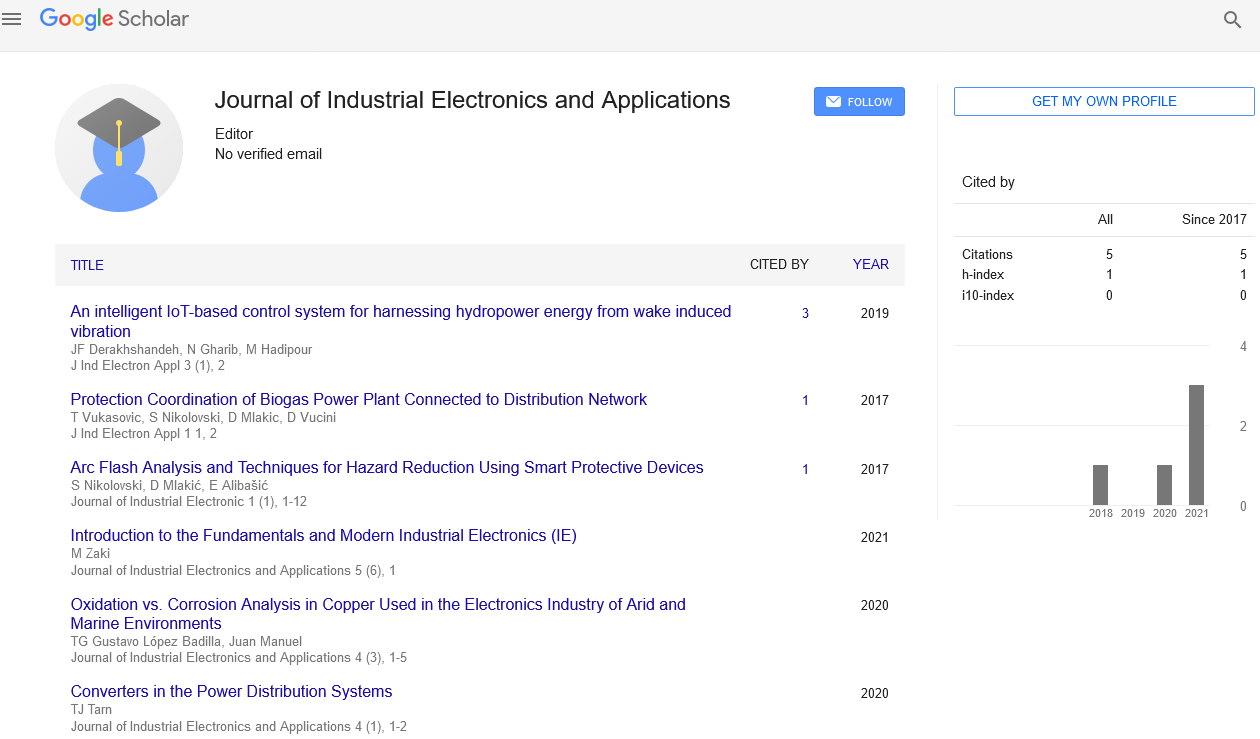Perspective, Vol: 7 Issue: 3
Quantum Electronic Intersection of Quantum Mechanics and Advanced Electronic Devices
Edward James*
1Department of Physics, University of Basel, Basel, Switzerland
*Corresponding Author: Edward james,
Department of Physics, University of
Basel, Basel, Switzerland
E-mail: chenwook.123@gmail.com
Received date: 05 September, 2023, Manuscript No. JIEA-23-117723;
Editor assigned date: 07 September, 2023, PreQC No. JIEA-23-117723 (PQ);
Reviewed date: 21 September, 2023, QC No. JIEA-23-117723;
Revised date: 29 September, 2023, Manuscript No. JIEA-23-117723 (R);
Published date: 06 October, 2023, DOI: 10.36648/JIEA.1000040
Citation: James E (2023) Quantum Electronic Intersection of Quantum Mechanics and Advanced Electronic Devices. J Ind Electron Appl 7:3.
Description
Quantum electronics is a cutting-edge field at the intersection of quantum mechanics and electronics. It leverages the unique properties of quantum physics to develop advanced electronic devices and systems that promise to revolutionize various industries. The fundamentals of quantum electronics, its potential applications, and the transformative impact it is poised to have on technology. At its core, quantum electronics harnesses the principles of quantum mechanics to manipulate and control electronic states and phenomena at the smallest possible scale. Quantum mechanics governs the behavior of particles at the quantum level, where they exhibit waveparticle duality, superposition, and entanglement. In quantum electronics, these phenomena are exploited for practical applications in electronic and photonic devices.
Qubits are the fundamental building blocks of quantum computing. Unlike classical bits (0 or 1), qubits can exist in a superposition of states, allowing for parallel processing and exponential computational power.
Entanglement is a phenomenon where the properties of two or more quantum particles become correlated, such that the state of one particle instantaneously affects the state of another, regardless of the distance separating them. This property is essential for quantum communication and quantum cryptography.
Quantum states can exist in multiple states simultaneously. This concept is exploited in quantum electronics to perform multiple tasks or computations in parallel.
Applications of quantum electronics
Quantum electronics holds the promise of revolutionizing computing by developing quantum computers. These machines can tackle complex problems, such as optimization, cryptography, and drug discovery, that are currently beyond the capabilities of classical computers.
Quantum Key Distribution (QKD) is a secure method for transmitting cryptographic keys. The principles of quantum entanglement and superposition provide a secure way to exchange encryption keys, ensuring the confidentiality of data.
Quantum sensors, such as atomic clocks and magnetometers, are incredibly precise and find applications in navigation, geophysics, and even in detecting gravitational waves.
Quantum electronics is pushing the boundaries of measurement accuracy. Quantum-enhanced metrology allows for more precise measurements of physical quantities, which is vital in scientific research and industrial applications.
Quantum imaging techniques, such as quantum ghost imaging and quantum-enhanced imaging, have the potential to improve medical imaging, remote sensing, and security applications.
Quantum key distribution systems offer unbreakable security for communication channels. They have practical applications in secure data transmission and secure financial transactions.
The transformative impact of quantum electronics
Quantum cryptography ensures secure communication that is immune to hacking and eavesdropping, addressing cybersecurity challenges in an increasingly interconnected world.
Quantum sensors and metrology techniques will improve our ability to measure and understand the world at unprecedented levels of sensitivity and precision.
Quantum imaging and quantum-enhanced technologies have the potential to revolutionize medical diagnostics, improving patient outcomes and healthcare efficiency.
Quantum computing can contribute to more efficient resource management, leading to advancements in renewable energy, materials science, and environmental monitoring.
Conclusion
Quantum electronics is on the cusp of transforming the technological landscape, unlocking new capabilities and applications that were once considered science fiction. The synergy between quantum mechanics and electronics has given rise to a new era of innovation with the potential to impact fields ranging from computing and communication to healthcare and environmental sustainability. As research in quantum electronics continues to advance, we can anticipate a future where technology reaches unparalleled heights, solving complex problems and pushing the boundaries of human knowledge and capability. Quantum electronics is on the verge of transforming technology and industries in profound ways. Computational Power: Quantum computers will tackle problems previously deemed unsolvable. They have the potential to revolutionize industries, from drug discovery to logistics and cryptography.
 Spanish
Spanish  Chinese
Chinese  Russian
Russian  German
German  French
French  Japanese
Japanese  Portuguese
Portuguese  Hindi
Hindi 